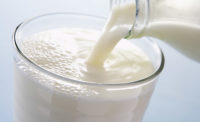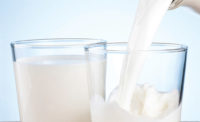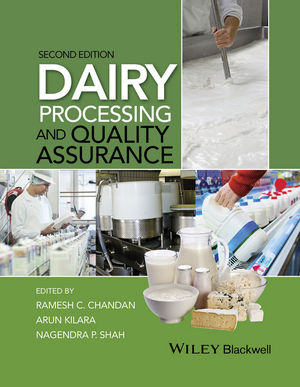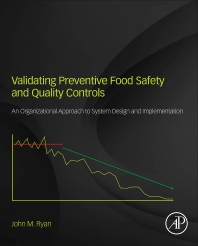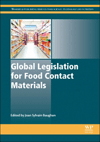A Raw Deal
Should dairy farms be allowed to sell jars and bottles of raw (unpasteurized) cow’s milk directly to consumers? It’s an issue that stirs the blood, like a helmet law for motorcycles or a body scan at the airport.
Should dairy farms be allowed to sell jars and bottles of raw (unpasteurized) cow’s milk directly to consumers? It’s an issue that stirs the blood, like a helmet law for motorcycles or a body scan at the airport. When should a state legislate for the interests of the many, and when for the interests of the individual?
In Wisconsin last year, politicians coalesced on each side of this question - some supported a bill to allow the sale of raw milk from farms because they supported the rights of the individual; their right to make a choice. Other legislators decided that consumption of raw milk is more than an individual choice - it is a choice that impacts children who are served raw milk and other dairy farms and people in the established dairy industry.
The Wisconsin bill (supporting raw milk sales) passed last May and was subsequently vetoed by then Governor Jim Doyle. Another Wisconsin bill, likely similar to the last, is expected in the new legislative session this spring.
Supporters of the sale of raw milk in jars or bottles look at this issue without nuance, as if the question of legalizing on-farm sales of raw milk is not complex - as if the rights of the individual versus the rights of the larger populace is the only issue. They make two points: individuals have a right to choose what they put in their body and individual farms should be allowed to enrich themselves.
It’s not that simple. Not by a long shot.
Consumption of raw milk - milk driven from farms and consumed in urban and suburban homes - can make people ill. According to the Centers for Disease Control and Prevention (CDC), from 1998 through 2008, states reported 86 outbreaks due to consumption of raw milk or raw milk products, resulting in 1,676 illnesses, 191 hospitalizations and two deaths. CDC states that a substantial portion of the raw-milk-associated disease burden falls on children. Among the 86 outbreaks noted above, 79% involved at least one person younger than 20 years old.
CDC adds to these facts: “Reported outbreaks represent the tip of the iceberg. For every outbreak and every illness reported, many others occur, and most illnesses are not part of recognized outbreaks.”
In Wisconsin last spring, the Wisconsin Medical Society, pediatricians and public health officials joined the dairy industry to ask the governor to veto raw milk legislation. He listened.
Raw milk is a highly perishable product. Today, a “hidden market” for raw milk in Wisconsin includes consumers picking up bulk loads of jars and bottles from farms in picnic coolers and holding these jars for pick-up by other consumers in an area.
Entire pages - entire chapters - of state and federal regulation control the bottling and distribution of cow’s milk in the United States. And that’s for the pasteurized product. Wisconsin’s raw milk bill allowed for sale at the farm “a sanitary container filled in a sanitary manner” and handed to a consumer. Bypassing all safety hurdles and regulations, the bill assumed the consumer would transport and store these jars with proper refrigeration and consume the product quickly.
People pin false hopes on the healing power of raw milk. At a public hearing on Wisconsin’s raw milk bill, some consumers echoed the myriad health benefits claimed by raw milk supporters. But in fact, there’s no scientific research to support claims that drinking unpasteurized milk can cure cancers, allay the impacts of autism or cure allergies or Crohn’s disease.
“There’s a dangerous sense of superiority shared by Minnesotans who buy raw milk and serve it to their families,” The Minneapolis Star Tribune noted last June after an outbreak of E Coli 0157:H7 in raw milk was linked to Hartmann Farm, south of Gibbon, Minn., by the Minnesota Department of Health. Eight people became ill, including six children.
“Had they visited Hartmann’s Sibley County farm,” the Star Tribune editorial stated, “they hopefully would have realized they were recklessly jeopardizing their families’ health.”
“A June 16 search of his operation by authorities shows it is far from the pastoral utopia they believed it to be,” the editorial added. “Milk was drawn in a filthy or insanitary place,” according to Sibley County court records and photos. Chickens ran free through the milking area. The gutter designed to carry manure out of this area was full of feces. The walls, floor, stanchion dividers, posts and other equipment were “visibly covered with manure.”
This farm in Minnesota does not represent modern dairy farming or even other farms that sell raw milk. But this outbreak belies the halo raw milk producers have burnished for their “superior” dairy food: a high-priced niche floated on unproven health claims.
No single disease outbreak has shattered American confidence in dairy foods. Yet every outbreak does some damage. In Wisconsin, raw milk advocates argued that “Big Dairy” tried (and succeeded) in stopping their legislation in stopping the “little guy.”
Wisconsin has thousands upon thousands of little guys, dairy farmers, who have no intention of selling raw milk directly to consumers - and a handful seeking this niche. And that vast majority wish to protect the safe, wholesome image dairy has earned through decades of advancements in cow care, sanitation, distribution and pristine processing.
This spring, Wisconsin will take up another bill to legalize the sale of raw milk. And the voice of the many - health professionals and pediatricians, dairy farmers and scientists, consumers and dairy processors - will be heard again in opposition.
John T. Umhoefer is the executive director of the Wisconsin Cheese Makers Association, Madison, Wis.
Dairy Foods seeks essays from dairy processors. Contact carperj@dairyfoods.com.
Should dairy farms be allowed to sell jars and bottles of raw (unpasteurized) cow’s milk directly to consumers? It’s an issue that stirs the blood, like a helmet law for motorcycles or a body scan at the airport. When should a state legislate for the interests of the many, and when for the interests of the individual?
In Wisconsin last year, politicians coalesced on each side of this question - some supported a bill to allow the sale of raw milk from farms because they supported the rights of the individual; their right to make a choice. Other legislators decided that consumption of raw milk is more than an individual choice - it is a choice that impacts children who are served raw milk and other dairy farms and people in the established dairy industry.
The Wisconsin bill (supporting raw milk sales) passed last May and was subsequently vetoed by then Governor Jim Doyle. Another Wisconsin bill, likely similar to the last, is expected in the new legislative session this spring.
Supporters of the sale of raw milk in jars or bottles look at this issue without nuance, as if the question of legalizing on-farm sales of raw milk is not complex - as if the rights of the individual versus the rights of the larger populace is the only issue. They make two points: individuals have a right to choose what they put in their body and individual farms should be allowed to enrich themselves.
It’s not that simple. Not by a long shot.
Consumption of raw milk - milk driven from farms and consumed in urban and suburban homes - can make people ill. According to the Centers for Disease Control and Prevention (CDC), from 1998 through 2008, states reported 86 outbreaks due to consumption of raw milk or raw milk products, resulting in 1,676 illnesses, 191 hospitalizations and two deaths. CDC states that a substantial portion of the raw-milk-associated disease burden falls on children. Among the 86 outbreaks noted above, 79% involved at least one person younger than 20 years old.
CDC adds to these facts: “Reported outbreaks represent the tip of the iceberg. For every outbreak and every illness reported, many others occur, and most illnesses are not part of recognized outbreaks.”
In Wisconsin last spring, the Wisconsin Medical Society, pediatricians and public health officials joined the dairy industry to ask the governor to veto raw milk legislation. He listened.
Raw milk is a highly perishable product. Today, a “hidden market” for raw milk in Wisconsin includes consumers picking up bulk loads of jars and bottles from farms in picnic coolers and holding these jars for pick-up by other consumers in an area.
Entire pages - entire chapters - of state and federal regulation control the bottling and distribution of cow’s milk in the United States. And that’s for the pasteurized product. Wisconsin’s raw milk bill allowed for sale at the farm “a sanitary container filled in a sanitary manner” and handed to a consumer. Bypassing all safety hurdles and regulations, the bill assumed the consumer would transport and store these jars with proper refrigeration and consume the product quickly.
People pin false hopes on the healing power of raw milk. At a public hearing on Wisconsin’s raw milk bill, some consumers echoed the myriad health benefits claimed by raw milk supporters. But in fact, there’s no scientific research to support claims that drinking unpasteurized milk can cure cancers, allay the impacts of autism or cure allergies or Crohn’s disease.
“There’s a dangerous sense of superiority shared by Minnesotans who buy raw milk and serve it to their families,” The Minneapolis Star Tribune noted last June after an outbreak of E Coli 0157:H7 in raw milk was linked to Hartmann Farm, south of Gibbon, Minn., by the Minnesota Department of Health. Eight people became ill, including six children.
“Had they visited Hartmann’s Sibley County farm,” the Star Tribune editorial stated, “they hopefully would have realized they were recklessly jeopardizing their families’ health.”
“A June 16 search of his operation by authorities shows it is far from the pastoral utopia they believed it to be,” the editorial added. “Milk was drawn in a filthy or insanitary place,” according to Sibley County court records and photos. Chickens ran free through the milking area. The gutter designed to carry manure out of this area was full of feces. The walls, floor, stanchion dividers, posts and other equipment were “visibly covered with manure.”
This farm in Minnesota does not represent modern dairy farming or even other farms that sell raw milk. But this outbreak belies the halo raw milk producers have burnished for their “superior” dairy food: a high-priced niche floated on unproven health claims.
No single disease outbreak has shattered American confidence in dairy foods. Yet every outbreak does some damage. In Wisconsin, raw milk advocates argued that “Big Dairy” tried (and succeeded) in stopping their legislation in stopping the “little guy.”
Wisconsin has thousands upon thousands of little guys, dairy farmers, who have no intention of selling raw milk directly to consumers - and a handful seeking this niche. And that vast majority wish to protect the safe, wholesome image dairy has earned through decades of advancements in cow care, sanitation, distribution and pristine processing.
This spring, Wisconsin will take up another bill to legalize the sale of raw milk. And the voice of the many - health professionals and pediatricians, dairy farmers and scientists, consumers and dairy processors - will be heard again in opposition.
John T. Umhoefer is the executive director of the Wisconsin Cheese Makers Association, Madison, Wis.
Dairy Foods seeks essays from dairy processors. Contact carperj@dairyfoods.com.
Looking for a reprint of this article?
From high-res PDFs to custom plaques, order your copy today!



